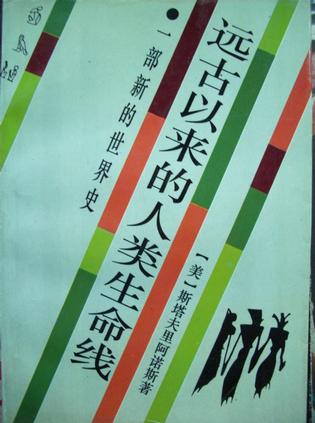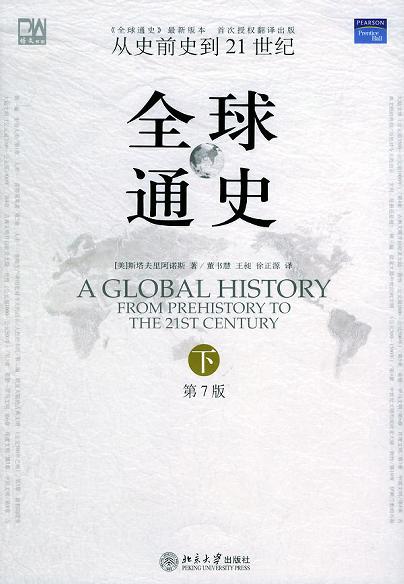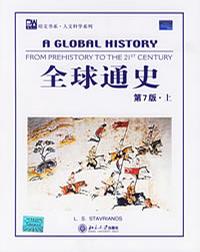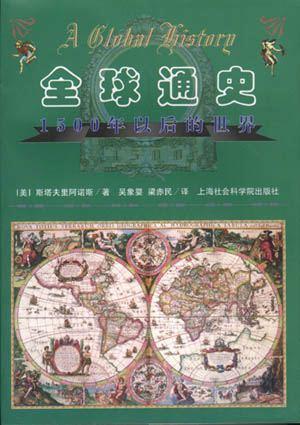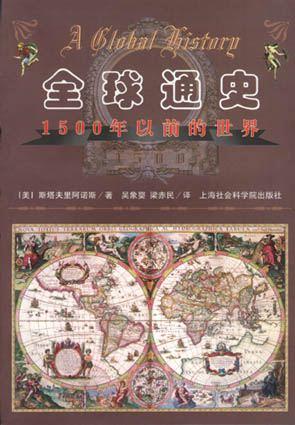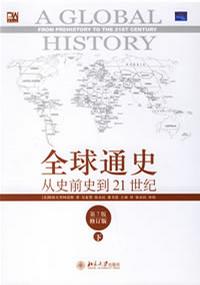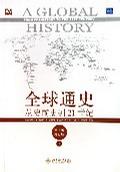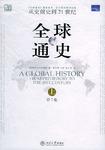欢迎来到相识电子书!
标签:斯塔夫里阿诺斯
-
全球分裂--第三世界的历史进程
目录: 上册 作者前言 第一编 第三世界的出现 1400-1770年 第一章 导言 第二章 商业资本主义和新大陆殖民主义的时代 第三章 第三世界在东欧的开端 第四章 第三世界在拉丁美洲的开端 第五章 非洲--一个外缘地区 第六章 中东--一个外缘地区 第七章 亚洲:一个外缘以外的区域 第二编 第三世界 一个全球性体系:1770-1870年 第八章 工业资本主义与渐趋衰落的殖民主义的时代 第九章 拉丁美洲的新殖民主义 第十章 非洲:从奴隶贸易到合法贸易 第十一章 中东进入第三世界 第十二章 印度进入第三世界 第三编 第三世界 一个全球性的体系:1870-1914年 第十三章 垄断资本主义和全球殖民主义的地代 第十四章 非洲进入第三世界 第十五章 中国进入第三世界 第十六章 俄国进入第三世界 第十七章 日本的例外情况 第十八章 第三世界反抗运动的早期阶--1914年 下册 第四编 第三世界为独立而斗争:二十世纪 第十九章 防御性垄断资本主主义,革命与新殖民主义的时代 第二十章 第一次全球性革命浪潮,1914-1939:1917年俄国革命的开创 第二十一章 第一次全球性革命浪潮,1914-1939:革命在世界范围内的表现 第二十二章 第二次全球性革命浪潮,1939-1949年中国革命的发端 第二十三章 第二次全球性革命浪潮,1939--:全球性革命现象 第二十四章 共同的认识 参考书目 索引 -
全球通史(第7版 下册)
本书初版问世以来,赞誉如潮,被译成多种语言流传于世,可谓经典之中的经典。后经作者多次修订增补,现已更新至第7版,在保留原文精华的基础上,又融入了时新的研究成果,使这部名著在内容和体系上更加完善。 尤其值得一提的是,作者文笔隽永、笔力深厚、才思横溢,整部著作前后一贯。 这里呈现原汁原味的英文版以飨广大读者,让您在颇具历史韵律的行文中思接千载,视通万里。 近年来,在作全球观点或包含全于内容重新进行世界史写的尝试中,最具有推动作用的那些著作恰恰是由历史学家个人独立完成的,其中以斯塔夫里阿诺斯的《全球通史》最为著名。 -
全球通史(英文第7版上下)
From the Author to the Reader Each age writes its own history. Not because the earlier history is wrong, but because each age faces new problems, asks new questions, and seeks new answers. This precept is self-evident today when the tempo of change is increasing exponentially, creating a correspondingly urgent need for new history posing new questions and offering new answers. Our own generation, for example, was brought up on West-oriented history, and naturally so, in a West-dominated world. The nineteenth and early twentieth centuries were an era of Western hegemony in politics, in economics, and in culture. But the two World Wars and the ensuing colonial revolutions quickly ended that hegemony, as evidenced by the disappearance of the great European empires from the maps of the world. The names and the colors on the maps changed radically, reflecting the new world that had emerged by the mid-twentieth century. Slowly and reluctantly we recognized that our traditional West-oriented history was irrelevant and misleading in this world. A new global perspective was needed to make sense of the altered circumstances. The transition from the old to the new was achieved, albeit with much soul searching and acrimony. By the 1960s the reality of the shift was evident in the emergence of the World History Association, in the appearance of the Journal of World History, and in the publication of the first edition of this text. This brings us back to our original question: Why publish a new edition for the twentieth-first century, only a few decades after the first edition? The answer is the same as the answer given to justify the first edition: a new world requires a correspondingly new historical approach. The postcolonial world of the 1960s necessitated a new global history. Today the equally new world of the 1990s, and of the twentieth-first century, requires an equally new historical approach. The new world of the 1960s was in large part the product of the colonial revolutions. The new world of the 1990s , as Pope Pius VI noted, is the product of the “magic influence of science and technology”. The pervasiveness of this influence is evident in the “gigantic problems” it has created in all aspects of our lives. For example, students of the late twentieth century doubtless remember their daily prostration under their wooden desks, probably wondering what protection those flimsy structures could offer against nuclear bombs. The generation of students had to face up to not only new dangers to human life, but also to unprecedented peril to the mother Earth which had given birth to that life. Oceanographer Jacques Cousteau has warmed: Mankind has probably done more damage to the Earth in the twentieth century than in all previous human history. Likewise the environmental organization Worldwatch Institute concluded in 1989: By the end of the next decade the die will pretty well be cast. As the world enters the twentieth-first century, the community of nations either will have rallied and turned back the threatening trends, or environmental deterioration and social disintegration will be feeding on each other. -
全球通史
本书是一部世界史。它论述的是全球而不是某一国家或地区。它关注的是所有民族而不仅仅是西方诸民族或非西方诸民族。它是可以用来救治我们现在所面临的、由于陶醉于技术进步而产生的深深的精神危机的一种思想武器,它有助于人们理解包含各种可能性和选择的未来。 -
全球通史
斯塔夫里阿诺斯的这部潜心力作自1970年初版问世以来,赞誉如潮,被译成多种语言流传于世,可谓经典之中的经典。第7版在保留原文精华的基础上,融入了时新的研究成果,新增了数百幅生动珍贵的图片和脉络清晰的地图,使这部名著在内容和体系上更加完善。 本书初版问世以来,赞誉如潮,被译成多种语言流传于世,可谓经典之中的经典。后经作者多次修订增补,尤其值得一提的是,作者文笔隽永、笔力深厚、才思横溢,整部著作前后一贯。 近年来,在作全球观点或包含全于内容重新进行世界史写的尝试中,最具有推动作用的那些著作恰恰是由历史学家个人独立完成的,其中以斯塔夫里阿诺斯的《全球通史》最为著名。 -
全球通史(下)
本书分八个部分,四十四个章节,主要讲述了世界历史的进化,世界文明的发展及其对现代社会的影响。作者着眼于全球,侧重于那些有影响的、促进历史发展的历史事件,其中包括原始社会、欧亚大陆的古代文明、欧亚大陆的原始文明、欧亚以外的世界、地区分割后的世界、西方世界的崛起、西方人统治的世界、西方的衰落与成功等八个主要的部分。重点突出,主题鲜明,着重有三个主要的问题,即(1)欧洲扩张的根源;(2)欧洲扩张前的儒家文化、穆斯林和其它非欧洲的世界;(3)欧洲扩张的各个历史时期:伊比利亚时期,荷兰、法国、英国时期,沙俄时期。本书为下册。 斯塔夫里阿诺斯的这部潜心力作自1970年初版问世以来,赞誉如潮,被译成多种语言流传于世,可谓经典之中的经典。第7版在保留原文精华的基础上,融入了时新的研究成果,新增了数百幅生动珍贵的图片和脉络清晰的地图,使这部名著在内容和体系上更加完善。作者文笔隽永,笔力深厚,才思横溢,整部著作风格前后一贯,令您在颇具历史韵律的行文中思接千载、视通万里。 -
全球通史(上)
本书分八个部分,四十四个章节,主要讲述了世界历史的进化,世界文明的发展及其对现代社会的影响。作者着眼于全球,侧重于那些有影响的、促进历史发展的历史事件,其中包括原始社会、欧亚大陆的古代文明、欧亚大陆的原始文明、欧亚以外的世界、地区分割后的世界、西方世界的崛起、西方人统治的世界、西方的衰落与成功等八个主要的部分。重点突出,主题鲜明,着重有三个主要的问题,即(1)欧洲扩张的根源;(2)欧洲扩张前的儒家文化、穆斯林和其它非欧洲的世界;(3)欧洲扩张的各个历史时期:伊比利亚时期,荷兰、法国、英国时期,沙俄时期。本书为上册。 斯塔夫里阿诺斯的这部潜心力作自1970年初版问世以来,赞誉如潮.被译成多种语言流传于世,可谓经典之中的经典。第7版在保留原文精华的基础上.融入了时新的研究成果.新增了数百幅生动珍贵的图片和脉络清晰的地图,使这部名著在内容和体系上更加完善。作者文笔隽永,笔力深厚,才思横溢,整部著作风格前后一贯,令您在颇具历史韵律的行文中思接千载、视通万里。 -
全球通史(第7版 上册)
斯塔夫里阿诺斯的这部潜心力作自1970年初版问世以来,赞誉如潮,被译成多种语言流传于世,可谓经典之中的经典。第7版在保留原文精华的基础上,融入了时新的研究成果,新增了数百幅生动珍贵的图片和脉络清晰的地图,使这部名著在内容和体系上更加完善。
热门标签
下载排行榜
- 1 梦的解析:最佳译本
- 2 李鸿章全传
- 3 淡定的智慧
- 4 心理操控术
- 5 哈佛口才课
- 6 俗世奇人
- 7 日瓦戈医生
- 8 笑死你的逻辑学
- 9 历史老师没教过的历史
- 10 1分钟和陌生人成为朋友

